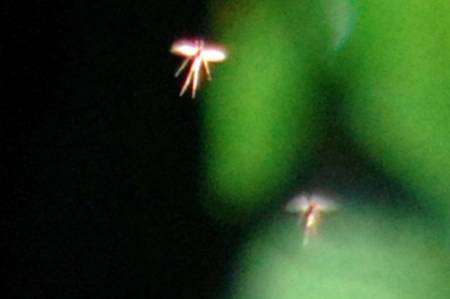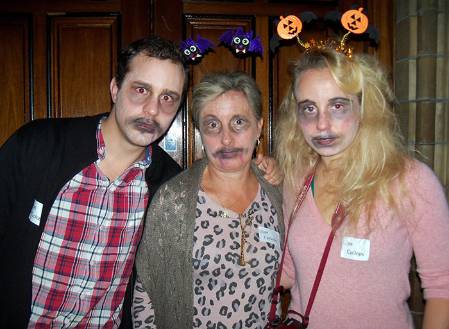This week I came across links to several versions of a story out of Manchester claiming a university professor had photographed fairies. Before you ask, no, the articles weren't published on the 1st, so I could rule out an April Fool. And John Hyatt, the photographer who captured the tiny creatures on camera, swore to the Manchester Evening News that his images were 'genuine and have not been altered in any way'. He told the newspaper:
The message to people is to approach them with an open mind. There are stranger things in life than fairies, and life grows everywhere
Here at the Museum our scientists know better than most about the weird and wonderful creatures nature can throw up. But while even the most rational among us might want to believe in the fantastical, we are, after all, members of a world-class scientific institution, and it is our practice - our obligation - to examine claims of new species rigorously.
So I took the evidence to Erica McAlister, our resident expert in small flying things (or Diptera, to use the technical term), for a professional analysis of these photographs of what are being called the Rossendale Fairies.
John Hyatt's photographs of what he believes are fairies, taken in Whitaker Park in Rossendale, Lancashire, and published by the Manchester Evening News. The creatures have been dubbed the Rossendale Fairies, in a nod to the famous story of the Cottingley Fairies, first photographed in 1917, and championed by Sir Arthur Conan Doyle.
Prefacing her findings with a warning that 'I am basing all my fairy knowledge on Wikipedia, a publication that is not peer reviewed, and therefore some of what I present may be inaccurate', Erica said:
My first impression was they can’t be fairies as there is no wand. But that is like saying mosquitoes aren’t flies because they don’t look like your typical house fly, so I had to approach this more taxonomically.
Wiki states that: "Although in modern culture they are often depicted as young, sometimes winged, humanoids of small stature, (fairies) originally were depicted quite differently: tall, radiant, angelic beings or short, wizened trolls being two of the commonly mentioned forms. Diminutive fairies of one kind or another have been recorded for centuries, but occur alongside the human-sized beings; these have been depicted as ranging in size from very tiny up to the size of a human child".
So within the modern, highly evolved fairies (that is incredibly fast evolution from their original body form to the present, but this may be because they are magical) small size is normal and the habitat description (occurring alongside humans) would fit their locality.
And to further help with morphological identification Wiki states: "Wings, while common in Victorian and later artwork of fairies, are very rare in the folklore; even very small fairies flew with magic, sometimes flying on ragwort stems or the backs of birds. Nowadays, fairies are often depicted with ordinary insect wings or butterfly wings".
It was that reference to insect wings that gave Erica the breakthrough she was after in her quest to identify the creatures in Hyatt's photographs.
Hmmm, maybe they are not fairies at all, but rather insects. Small swarming winged insects… Small swarming flies… Small swarming midges such as chironomids.
When one compares the behaviour, size and general morphology of a midge versus a fairy there are similarities (convergent evolution), but I think that I will throw my professional credentials on the line and plump with the former. These tiny midges form mating swarms where the males will ‘dance’ around trying to attract the opposite sex. They have delicate wings and long legs which dangle down.
A classical depiction of a fairy, by 17th century artist Luis Ricardo Falero (left), and a chironomid, or non-biting midge, photographed by Glen Peterson (right).
So there we have it: one of the best minds in the study of small winged creatures has determined that these suspected fairies photographed by John Hyatt are in fact, most likely, midges. But Erica tempered her findings with the following statement:
There are many undescribed species on the planet and who knows what lies out there – we are still determining new species all the time, including large mammals. But as far as I know, no magical beings have turned up yet.
Personally, I’m holding out for a unicorn.








